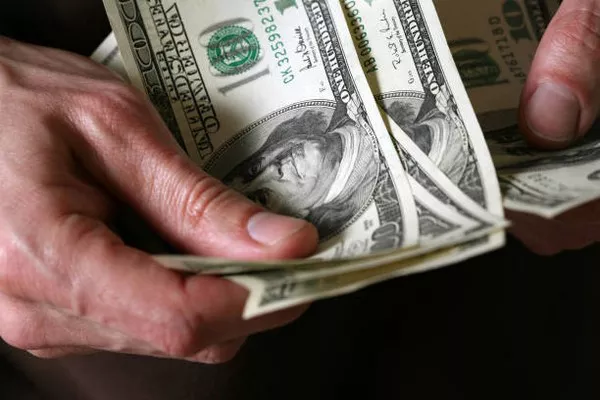In the realm of global economics, few topics provoke as much speculation and concern as the stability of the US dollar. As the world’s primary reserve currency and a cornerstone of international trade, any suggestion of its potential collapse raises significant questions about the future of the global financial system. To assess whether such fears are warranted, it’s crucial to delve into the factors influencing the dollar’s stability and the broader dynamics shaping the global monetary landscape.
The Significance of the US Dollar
The US dollar’s role as the dominant global reserve currency is deeply entrenched. Central banks around the world hold substantial reserves of dollars, and the majority of international transactions are conducted in USD. This widespread acceptance and use of the dollar provide the United States with considerable economic advantages, including easier access to credit and lower borrowing costs.
The dollar’s preeminence is rooted in historical and geopolitical factors. Post-World War II, the Bretton Woods Agreement established the US dollar as the primary reserve currency, backed by gold. Although this link was later abandoned in favor of a fiat currency system, the dollar’s supremacy persisted due to the economic strength and stability of the United States.
Challenges to Dollar Dominance
However, the dollar’s position is not unassailable. Several trends and developments in recent years have sparked concerns about its long-term stability:
1. Growing Debt Burden: The United States has amassed significant levels of public debt, exacerbated by expansive fiscal policies and budget deficits. A burgeoning national debt could undermine investor confidence in the dollar’s long-term value.
2. Trade Imbalances: Persistent trade deficits have contributed to a flow of dollars overseas, increasing reliance on foreign capital to finance domestic consumption and investment. This dependence exposes the US economy to external shocks.
3. Geopolitical Shifts: The emergence of new economic powers, such as China, poses a challenge to US dollar hegemony. China’s efforts to internationalize the renminbi (RMB) through initiatives like the Belt and Road Initiative could diminish the dollar’s dominance over time.
4. Monetary Policy and Inflation: Aggressive monetary easing by the Federal Reserve, especially during periods of economic crisis, raises concerns about potential inflationary pressures eroding the dollar’s purchasing power.
The Risk of Dollar Collapse
The notion of a dollar collapse conjures images of hyperinflation and economic chaos akin to historical examples like Weimar Germany or more recent instances in Venezuela. However, such extreme scenarios are unlikely for several reasons:
1. Institutional Strength: The United States benefits from robust institutions, including an independent central bank and a transparent monetary policy framework. These factors contribute to stability and market confidence.
2. Demand for Safe Assets: Despite challenges, global demand for US Treasury securities remains strong, reflecting the dollar’s status as a safe haven asset during periods of uncertainty.
3. Lack of Viable Alternatives: While the RMB and other currencies may gain prominence regionally, none currently rival the dollar’s liquidity, stability, and widespread acceptance in global markets.
4. Network Effects: The dollar’s dominance is reinforced by network effects, where its ubiquity in trade and finance perpetuates its use, creating a self-reinforcing cycle.
Factors Supporting Dollar Resilience
Several factors bolster the dollar’s resilience and mitigate the risk of collapse:
1. Economic Fundamentals: Despite challenges, the US economy remains among the world’s largest and most diversified, supported by innovation, entrepreneurship, and a robust financial system.
2. Financial Innovation: The evolution of financial markets has facilitated greater flexibility in managing currency risk, reducing dependence on any single currency.
3. Diplomatic Influence: The United States wields considerable diplomatic and economic influence globally, supporting the dollar’s role as a preferred medium of exchange and store of value.
4. Policy Flexibility: The Federal Reserve’s ability to adapt monetary policy in response to economic conditions enhances the dollar’s stability and mitigates inflationary risks.
See Also How to Short the Dollar
Conclusion: Looking Ahead
While concerns about the dollar’s long-term stability are not unwarranted, predictions of its imminent collapse are premature. The dollar’s role as the world’s primary reserve currency is deeply entrenched, supported by a combination of economic, institutional, and geopolitical factors. However, the evolving landscape of global finance demands vigilance and adaptation.
Looking ahead, policymakers must address underlying fiscal challenges, promote sustainable economic growth, and strengthen international cooperation to ensure the dollar’s continued stability. Moreover, diversification of global reserve assets and efforts to enhance the role of alternative currencies could foster a more balanced and resilient international monetary system.
In summary, while the dollar faces significant challenges, its collapse remains a remote possibility given the enduring strengths of the US economy and financial system. Nonetheless, the shifting dynamics of global economics necessitate ongoing vigilance and proactive measures to safeguard the stability of the international monetary order.


